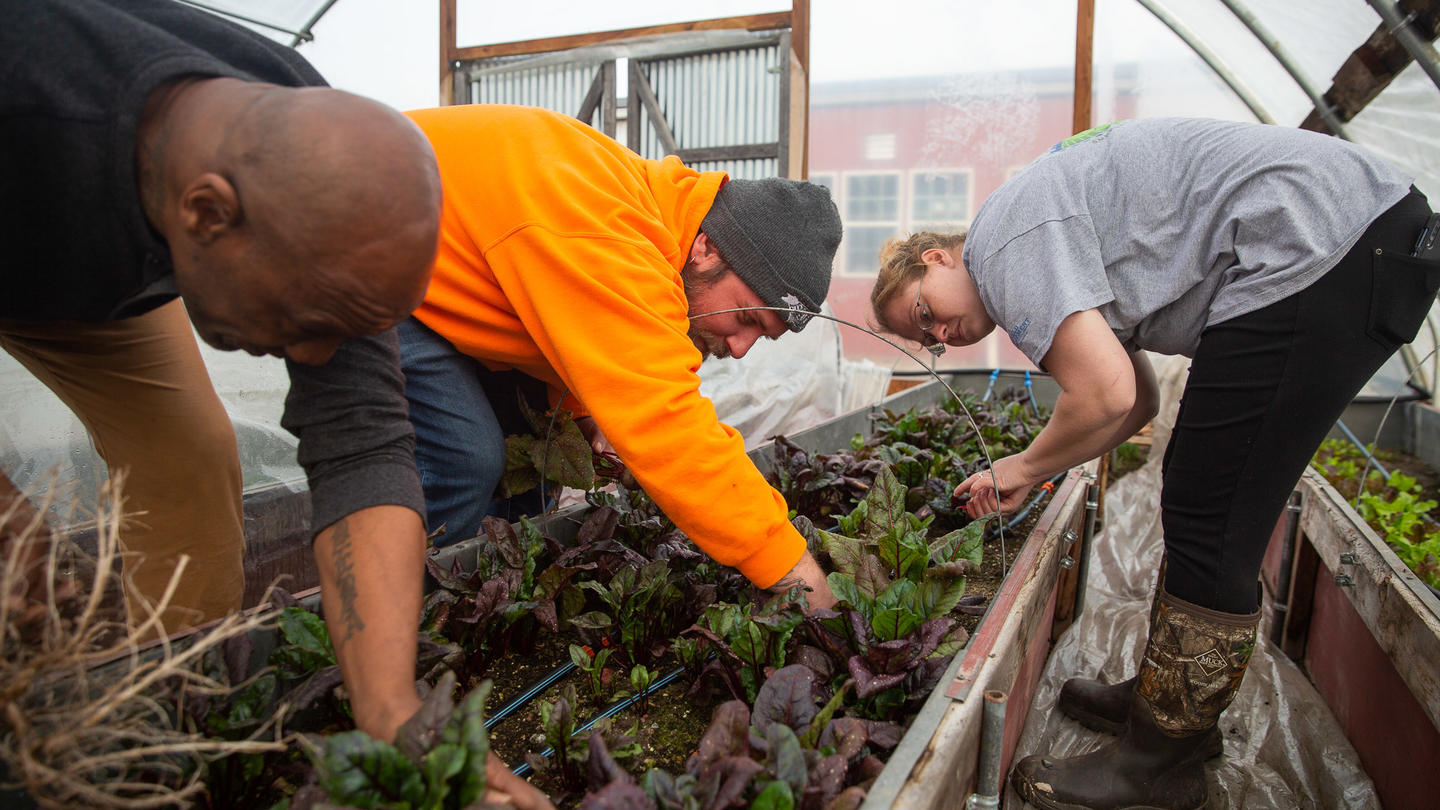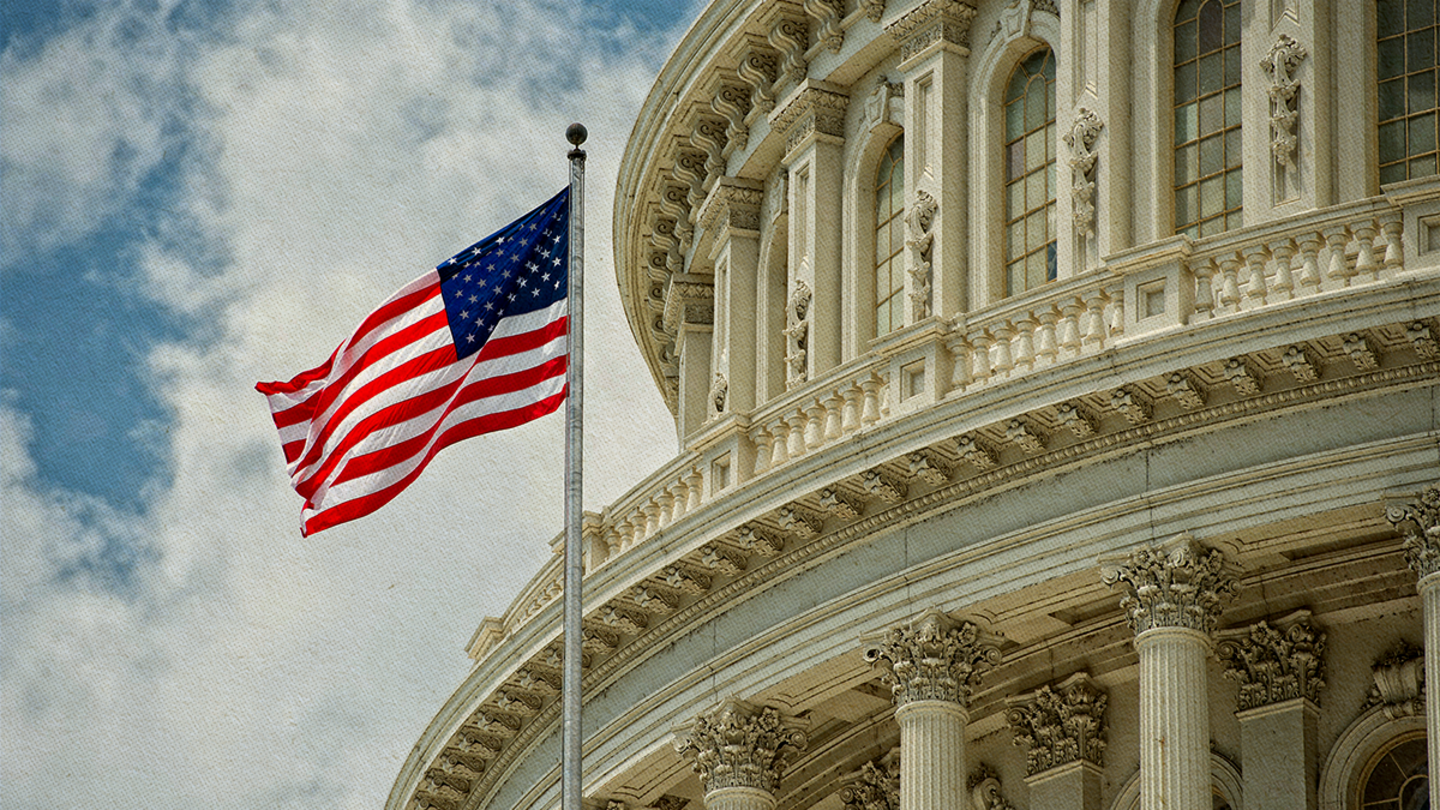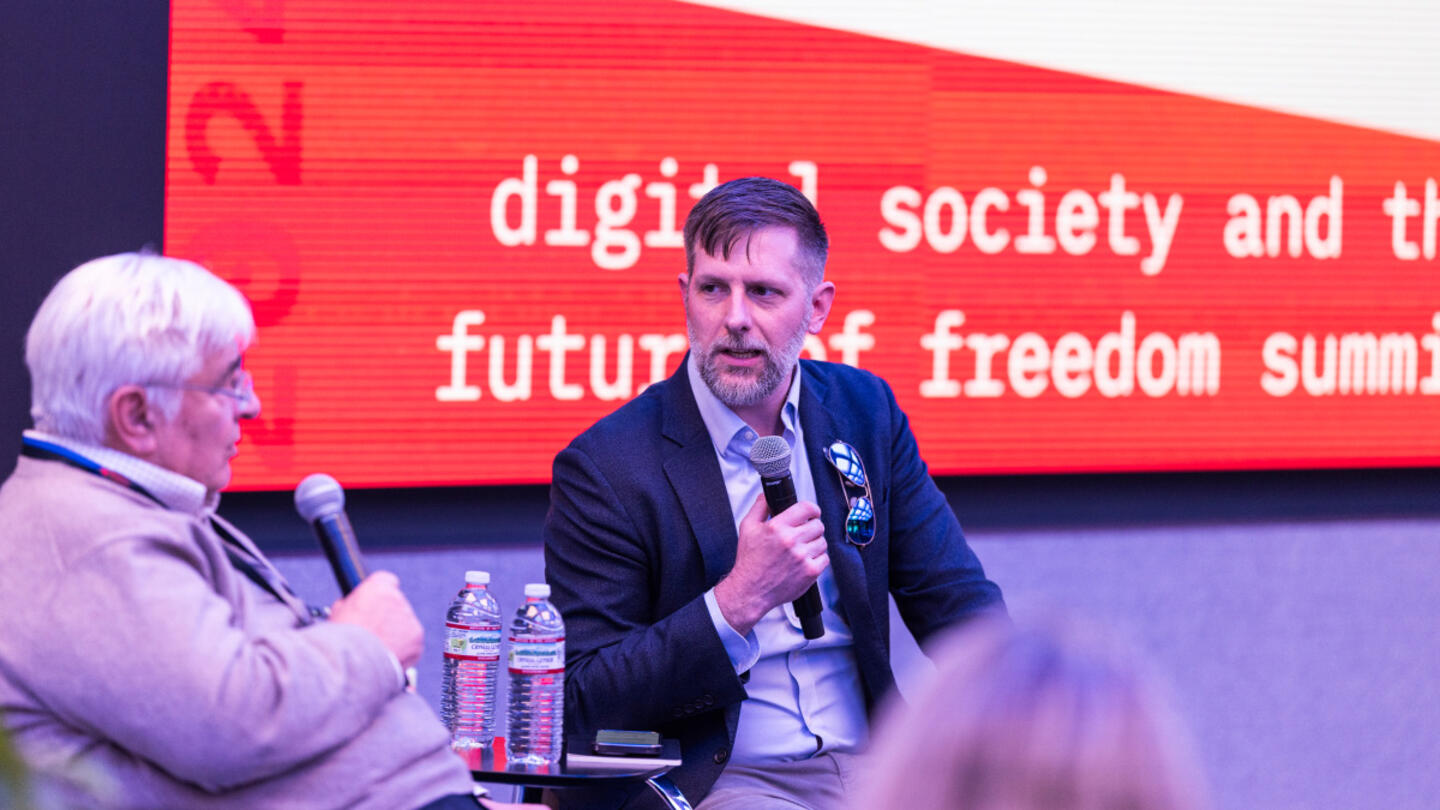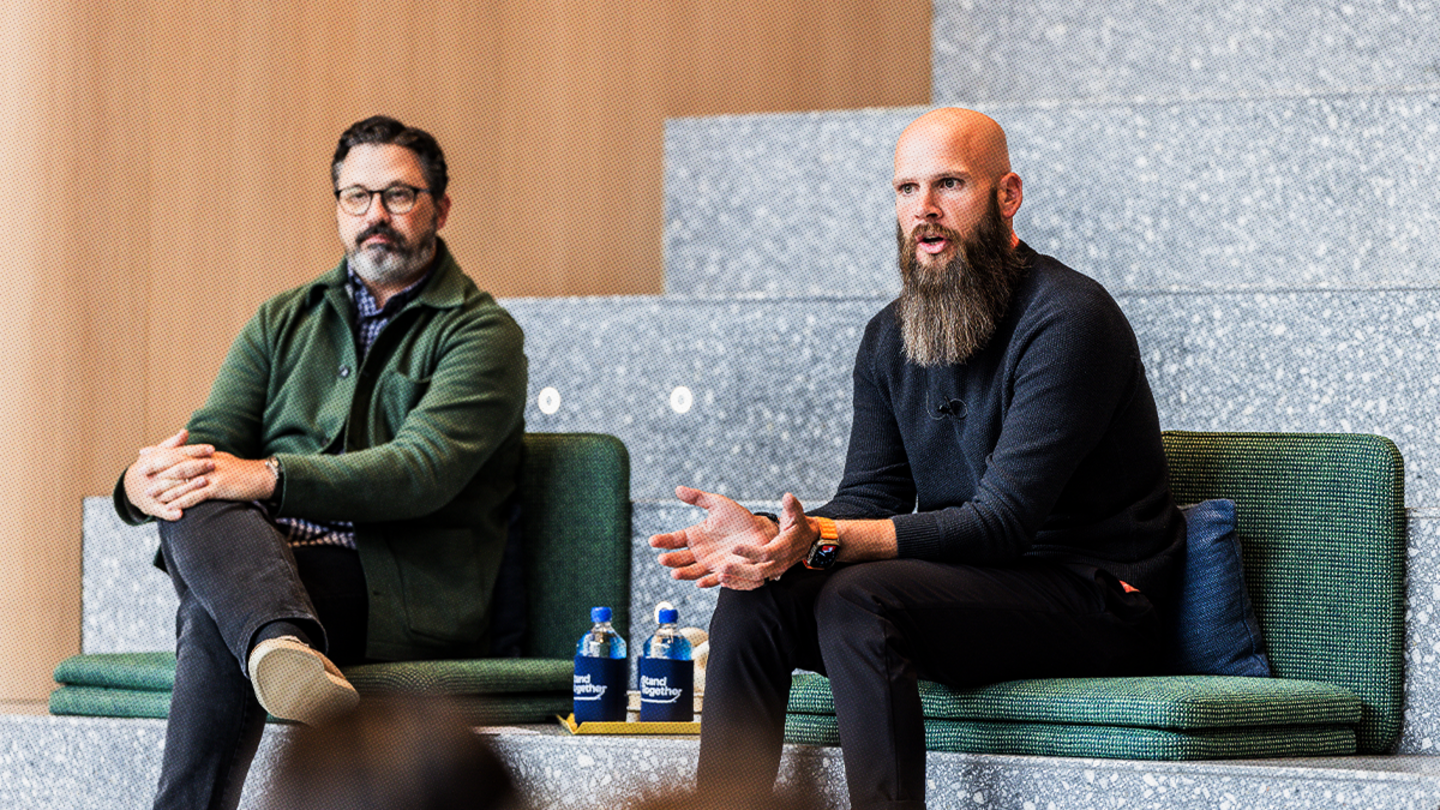For 100 years, the coal miners of West Virginia were proud to do the work required to power the nation, back-breaking and lung-blackening as it was. Now, as coalfields are turned to lavender fields, West Virginians are having to reconstruct their economy — leaning into education and innovation and away from nostalgia.
Brandon Dennison, a native West Virginian and founder of Coalfield Development, has been one of the champions of this change. "The last 100 years of central Appalachia has been defined by coal. That just is what it is," says Brandon. "Economically, it's never good to be totally dependent on one industry. Now that one industry, at least for central Appalachia, is phasing out and we're struggling with, 'what does that mean for us'?"
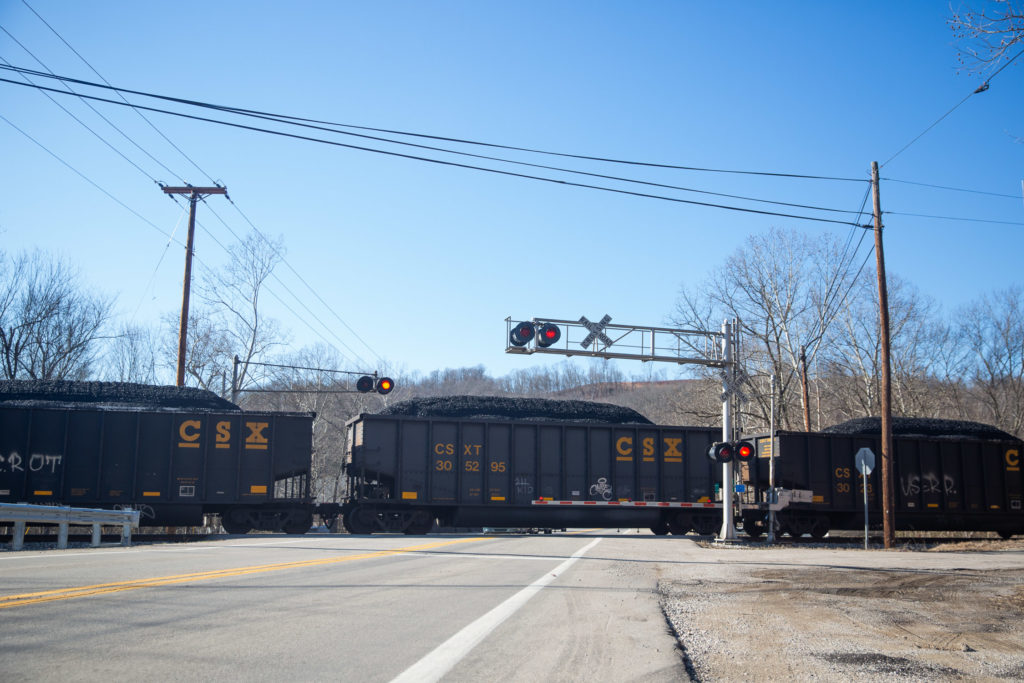
Triggered by the Great Recession of 2008-2009, the coal industry has been in steady decline, carrying with it a deathly identity crisis in West Virginia specifically. Many tried to medicate the despair, but instead of healing the state's depression, opioids further ravaged the workforce, particularly those aged 25 to 55. In 2017, West Virginia had the highest (by far) drug overdose death rate in the country.
"A lot of times it's just demoralizing," says Brandon. "This list will come out — obesity, drug overdoses, unemployment — and we're either at the top when you don't want to be at the top or at the bottom when you don't want to be at the bottom."
Marilyn Wrenn, a native of Clay County and chief development officer at Coalfield Development, called the abrupt change in the state's economic structure "devastating."
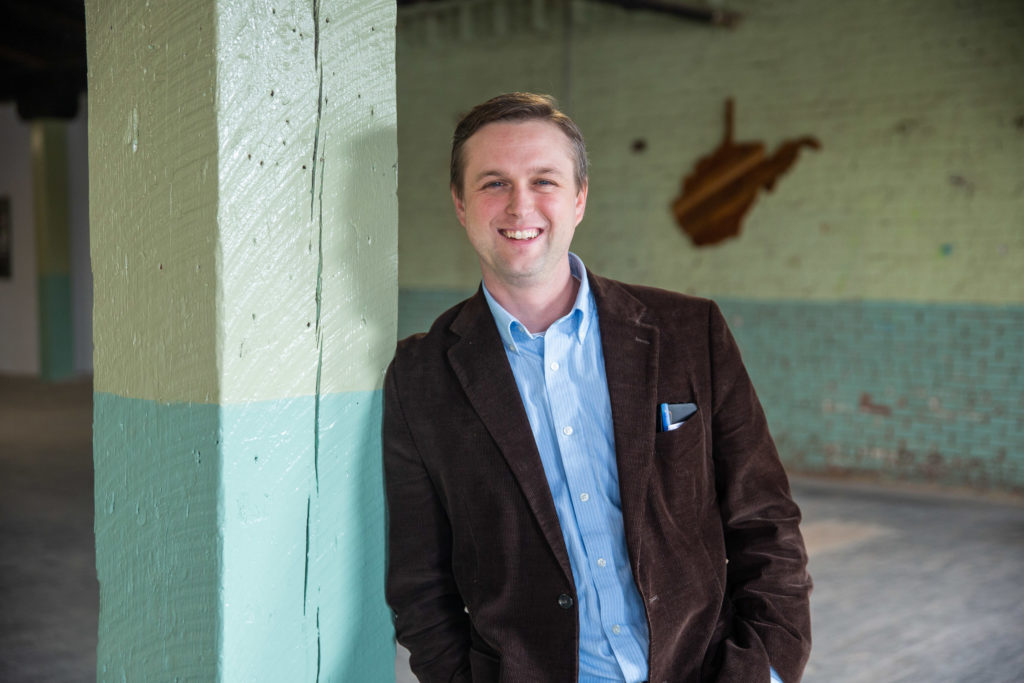
"People are physically and mentally hurting, so you can understand how it was possible for the opioid crisis to take such strong hold in some of our communities," she says. "And not only are we dealing with that direct crisis, but we are at the same time trying to transition an entire economy and re-skill people for a future that no one thought they would have to embrace 20, 30 years ago."
It is, says Brandon, "a moment of profound transition. And the question is, are we going to work this transition, as painful as it is, to become an incredible moment of transformation? Or are we going to get killed by it? It's going to be one or the other."
"Ultimately it's on us to figure out who we are and what we're going to be post-coal. I think we can be a heartbeat for the country, but ultimately it's on us to find our way."
Brandon Dennison
Appalachian creativity
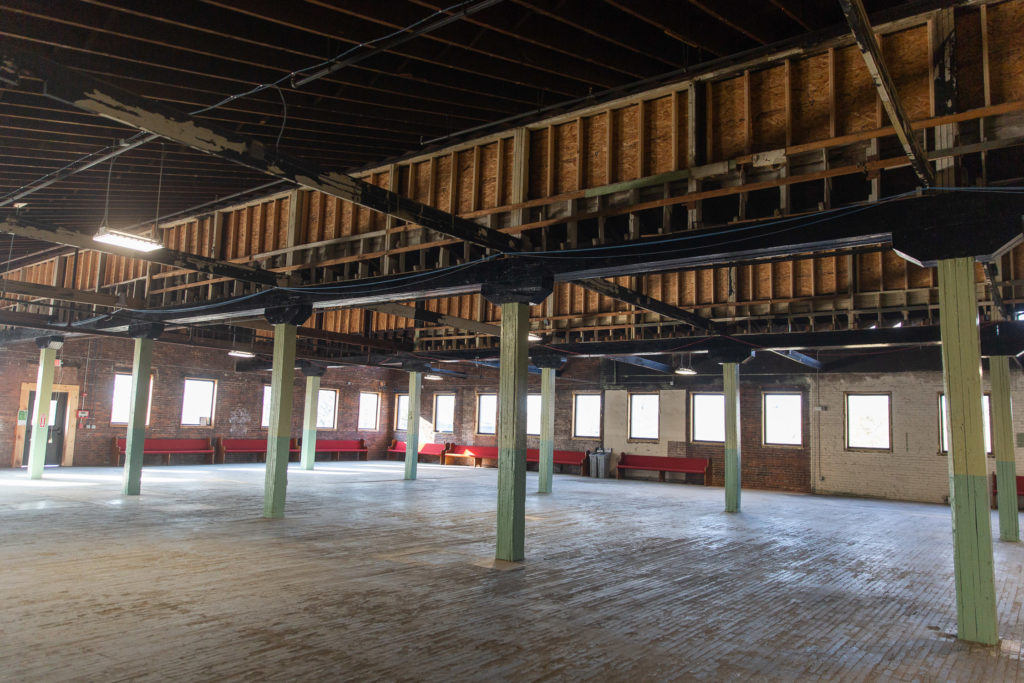
Patrick Bradshaw was born and raised in Westmoreland, just blocks from the Coalfield Development headquarters — a 96,000-square-foot building they've been rehabilitating over the past few years.
"This used to be a clothing manufacturer when I was a kid and then it was closed down for 20, 25 years. We used to climb in here and play. It was just an abandoned building full of stuff," Patrick remembers. At age 18, Patrick was introduced to Oxycontin, which together with heroin hijacked his next decade.
"It got to the point to where I burnt all my bridges with my family, had stolen off of them, done terrible things," he admits. "I had nobody. I was homeless. I ended up going to jail for seven months. Got out and a couple months later is when I ran into Luke."
Luke, at this point, was volunteering for Coalfield, cutting the grass and cleaning out the building. He invited Patrick to join him and, in so doing, probably saved his life. "This is an amazing opportunity for the people that are struggling," says Patrick. "I mean, they give people in recovery jobs. Hell, I'm a recovering addict. I was just a couple months into my recovery when I got the opportunity. And it's helped keep me clean. I love what they're trying to do for this area because it needs help. It really does."
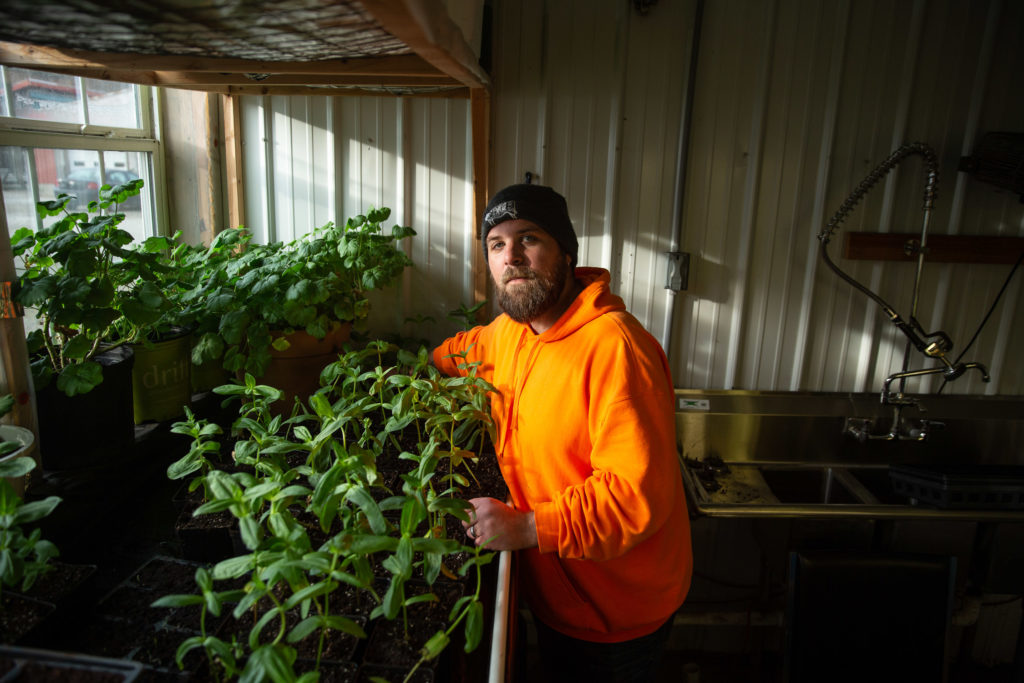
About a year later, Luke was hired as a property manager alongside Gina, another Westmoreland native who has lived here since 1961 and gone by this place every day of her life. "My mother worked here," she says. "At one time, there were over a thousand women that worked here in the Corbyn clothing factory."
Today, Gina explains, Coalfield incubates six social enterprises within the building. As she leads us into Saws Edge, the wood shop, she drops her voice and says, "OK, now everybody be quiet. This is the endangered North American woodworker. They can be a little skittish, so everybody watch it."
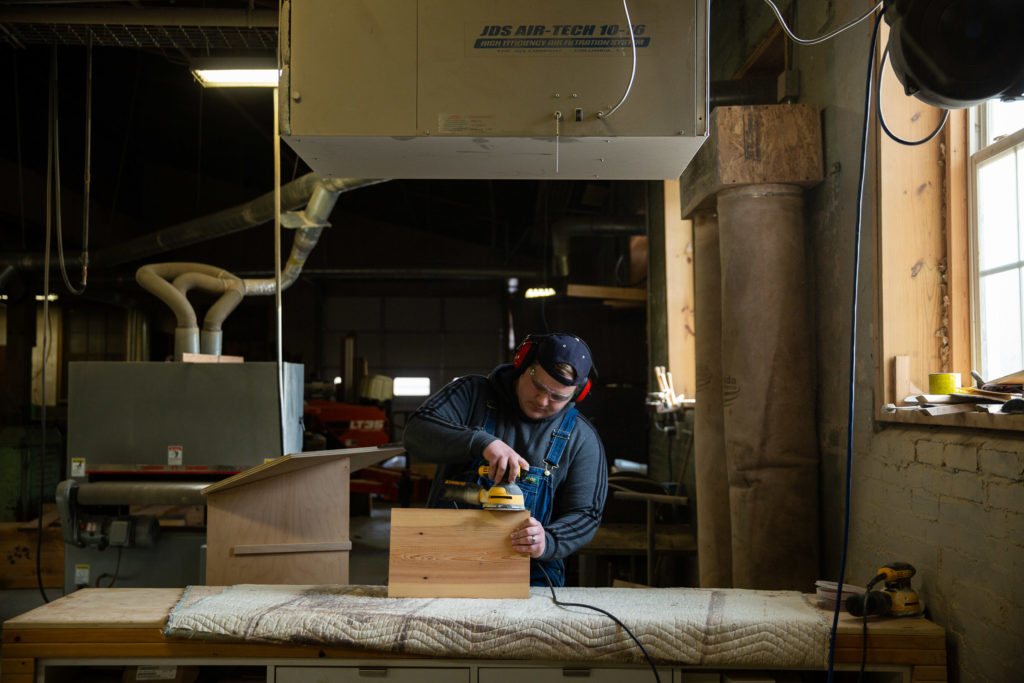
Here, fresh sawdust billows in the sunbeams as salvaged lumber is remade for ornament and utility, from cutting boards and coasters to wall hangings, desks and dining tables.
Mike, one of the "endangered" woodworkers, says, "We're working on the second prototype for the mayor's podium. He wanted something that was going to be lightweight and mobile. It's pretty neat, and it's fit for the mayor — he's a really tall guy so it's about eight inches taller than a normal podium."
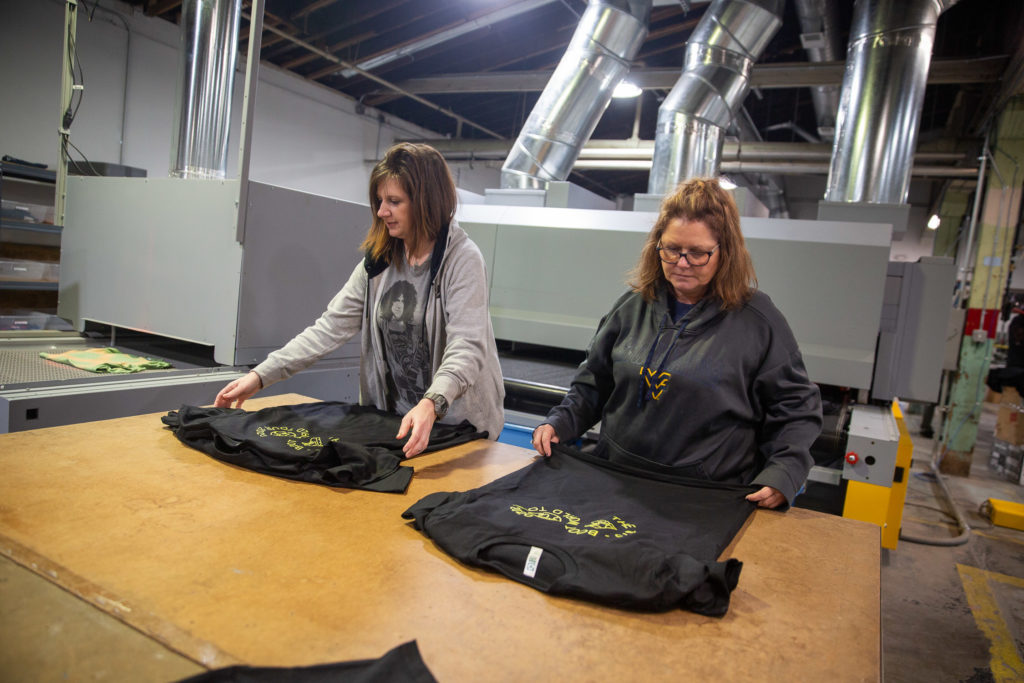
Each of Coalfield's social enterprises carry an ethic and mission for sustainability: Saws Edge woodshop works with salvaged lumber; the SustainU screenprinting operation prints on t-shirts made from recycled, single-use water bottles; Refresh grows fresh produce for the neighborhood and local restaurants; Solar Holler is now a leader in the region's solar energy industry; Revitalize crews renovate dilapidated homes and buildings for new life; and West Edge houses it all while providing the community with stunning event-rental space.
"Problem solving is probably the most defined form of creativity we Appalachians have — because we have to. We've had to be very creative in problem solving to stay in some of the places that we've made our homes. It's a challenging landscape," says Marilyn.
"Being able to capture and unleash that problem-solving ability in more traditional ways is a key to transforming this whole area, this whole landscape."
Marilyn Wrenn
The 33-6-3 model
"We understand that help isn't on the way. If it's going to get fixed, it's going to get fixed by West Virginians," says Bill Bissett, president and CEO of the Huntington Regional Chamber of Commerce, while sitting at Nomada Bakery, a recently opened third-wave coffee spot in downtown Huntington. "What we have to do is not only do good work and change ourselves, but also tell people we're changing, and that's a huge challenge."
For multigenerational coal communities, re-skilling is not a quick fix by any measure — it's the long game, the long investment. And because of the stability of Appalachia's core industries historically, high value has not been placed on higher education or entrepreneurialism. After graduating high school, most West Virginians went to work — an associate's or bachelor's degree were irrelevant in the mines, and expensive besides. Yet Coalfield Development has made higher education a central requirement for every crew member — even going so far as to build time for coursework into employment.
The son of two college professors, Brandon is passionate about this aspect of Coalfield's model: "Any research you do, at any level or depth of detail, says that in our modern economy if you don't have a degree, when the economy goes south you're going to be the first to get fired, and when the economy's ramping back up you're going to be the last to get hired, and the jobs you're going to get hired for are going to pay you less."
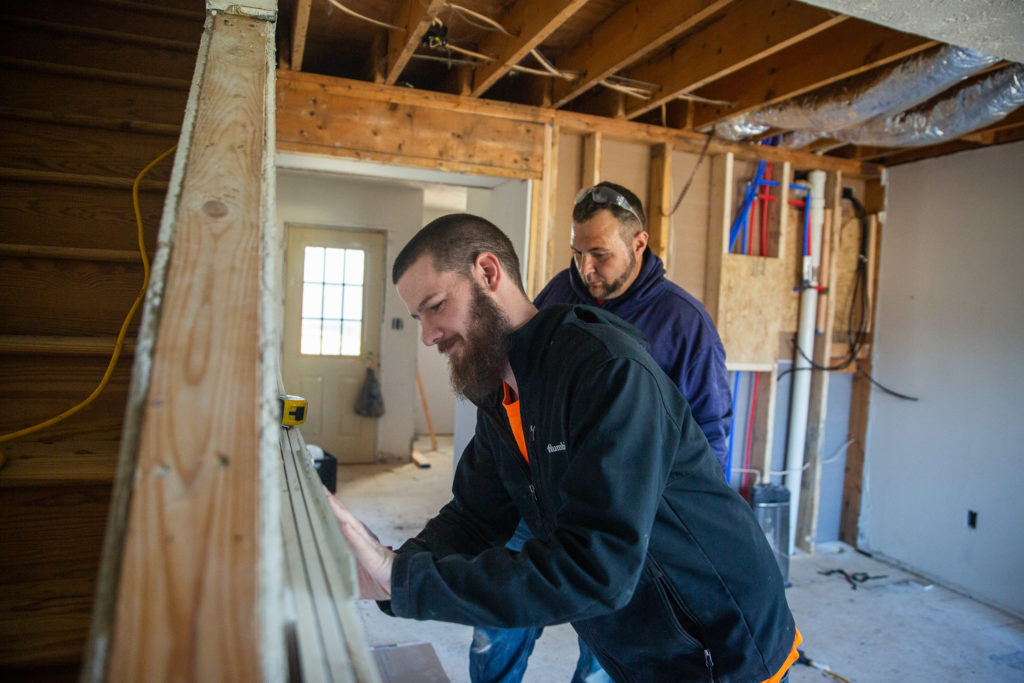
Andy Endicott is a prime example. During high school, Andy worked on the coal docks sampling and testing BTUs all day. When layoffs sent him home, it was his building trades teacher who knocked on the door and pointed him to Coalfield Development. That was nine years ago — he was Brandon and Chase's second hire.
"About halfway through the year, we started going to school," Andy says. "I never in my life thought I'd go to college and do all that. I didn't want to do it — I just wanted to go to work. That was the whole plan — get out of school, go to work. But now it's done and I'm the only one in my family that's gone to college and that's kind of satisfying."
Today, Andy is a crew chief for Revitalize, spending the next several months restoring a block of eight derelict apartments in Hamlin, about 30 miles southeast of Huntington. As part of his role, Andy mentors his crew members as they complete the 33-6-3 Coalfield program, including 33 hours of paid work, 6 hours of coursework for college or a professional certificate, and 3 hours for personal development and life skills. Not your typical 9-to-5, to say the least.
"Being a crew member is a major commitment. You're going to work and it's hard work, often out in the elements," says Brandon. "Then you're going to go to community college — most often they are first in their family to go to college. And then, we're going to carve out three hours every week to pry at your life and talk about deep, often painful issues and try to overcome those. So it's way more than just a job. And yet we find again and again, people in West Virginia and Appalachia, they're hungry for more and better and they just need a place."
"That whole personal development bit, combined with access to higher education and training is the recipe to really make these major changes in communities that are struggling," says Marilyn.
"The fact that we work individual to individual might seem like an odd approach when you have so many people who are struggling so hard, but that is the way it's going to be fixed."
Marilyn Wrenn
Seeds of transformation
Like many new ventures, Coalfield had to overcome difficult resistance in its first decade. It was about two years until Revitalize, its first social enterprise, won its first job — renovating the Urlings Building in Wayne. With meager funds raised at that point, Chase and Brandon set out to hire a crew.
"It was actually kind of sad," says Brandon. "A lot of people were skeptical that we would find people who were on public assistance or in recovery or on unemployment who wanted to work. There was just this cynicism that had built up." But for that first job they had 16 or 17 applicants and have not struggled since to find people wanting to work.
"The main barrier here is not going to be work ethic," says Brandon. "By and large, our people will come 20 minutes early and they'll work 'til 8 or 9 if you let them. We just love to work in West Virginia."
On the contrary, it's the 6 and 3 portions of the Coalfield equation that have proven the hardest. "We always knew the school would be tough, and it is," says Brandon, "but the life stuff is the main thing that prevents our crew members from success: health problems, money problems, home life problems, trauma, mental and emotional wellbeing, just chaos in life."
"That was an a-ha moment — when we realized that it's not enough to just create jobs and education. You've got to really cultivate the whole opportunity."
Brandon Dennison
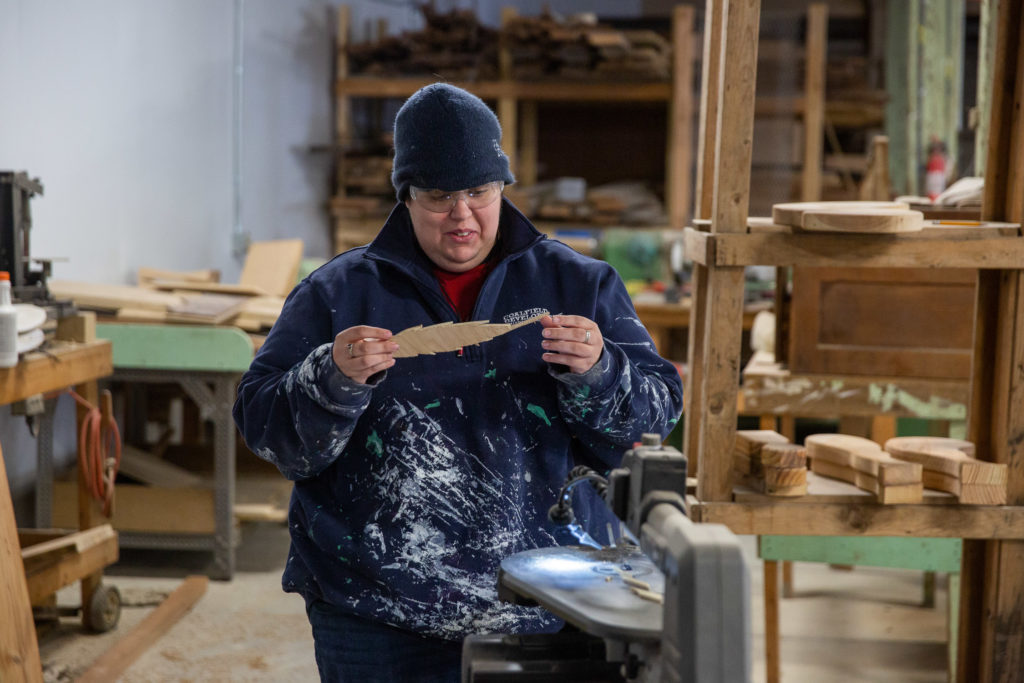
In April 2017, Coalfield found Megan Pate during a difficult season of life. Because of various mental health issues, she had been told by doctors she couldn't work more than three hours a day, four days a week. Getting the job at Coalfield was the boost she needed to begin proving people wrong in their underestimations of her.
Though Coalfield has successfully trained over 1,000 crew members, Megan is one of just 30 "Champions" — crew members who have completed the entire two-year Coalfield program, their associates degree and four professional certifications. Megan now works with one of Coalfield's partners, the Big Ugly Community Center, where she helps with renovations and programming. "It's really ugly looking, but it's full of love," she says.
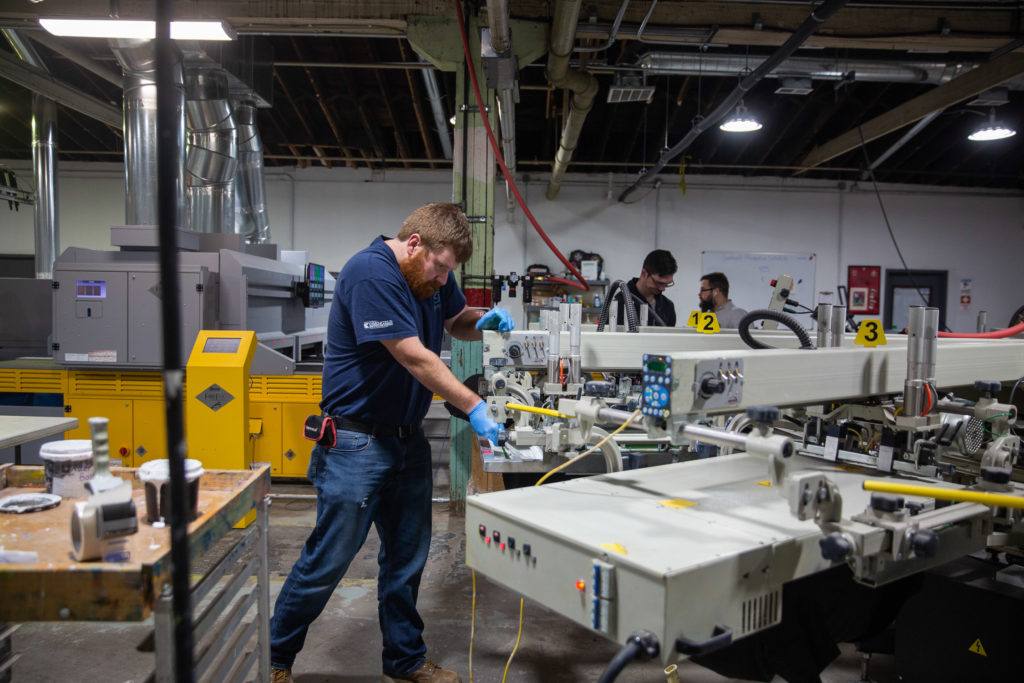
Coalfield found Brad Stapleton in September 2018 when he was working at a gas station owned by his aunt and uncle in his hometown of 2,000 people. "Even doing a simple little job like that I made it a mission to learn the customer base and learn the preferences of my customers, so that I could better serve them," says Brad.
One of those customers, Jim Caldwell, took notice and began pitching Brad on a new opportunity—a t-shirt business in Huntington. "I had done some online research before I signed on the dotted line," says Brad, "and it was intriguing. It drew me in. Like, OK, so not only am I going to go learn something new, which I love to do, I love to constantly expand, but I'm also going to be enriching other people, or trying to at least. If I have any inherent value at all, I'd love to give it to other people."
Everything he knows about screen-printing he learned on the job with Coalfield. Today, Brad is crew chief for SustainU and passionate about his work: "We're not only coming in here and learning a trade skill of sorts and doing something that's artistic and expressive, but we're reaching out into the communities, and we're reaching out to people that have barriers to employment, people that most employers maybe wouldn't have a second look at."
"Your crew members become sort of an extended family to you. In that it's more than just an employer-employee relationship. That dynamic goes a lot deeper. I consider these people my family, my friends and family, like a home away from home."
Brad Stapleton
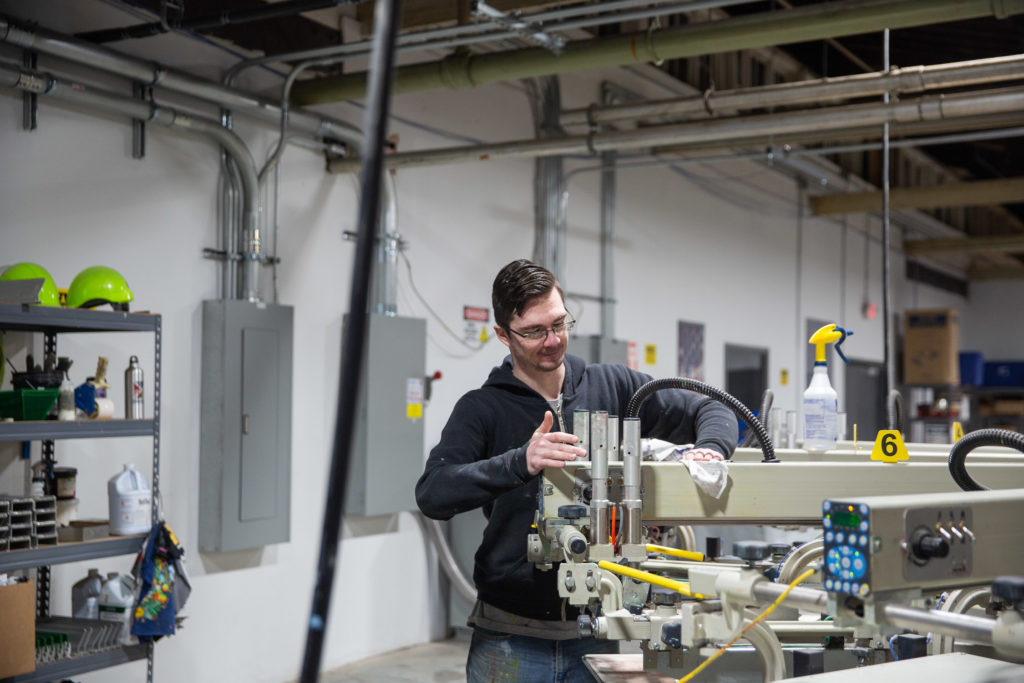
There's an interesting culture shift occurring here at Coalfield, where every participant is oriented toward the goal of creating, learning, nurturing something new — in the economy and in their own selves. It's deep transformation at the pace of sustainable growth.
"Every day I come into this building, I go to a project site and I meet people, especially some of them I recruited and I know where they're coming from, whether that was addiction or on public assistance or tried to go to college and failed out the first time," says Brandon. "It's so rewarding, six months, seven months later to see somebody on track, smiling, telling me they're on the dean's list, crying, telling me they have stable housing for the first time in years, and just so proud of their paycheck and so proud of the job that they're doing here. That's the vision made real."
"The fact that he can look to people with names and say their lives are different and better because of Coalfield Development is huge. You may have a person from very rural West Virginia who's getting up and talking in front of other human beings, which is very new to them and I'm sure terrifying on some level, but that's change."
Bill Bissett
The land of opportunity
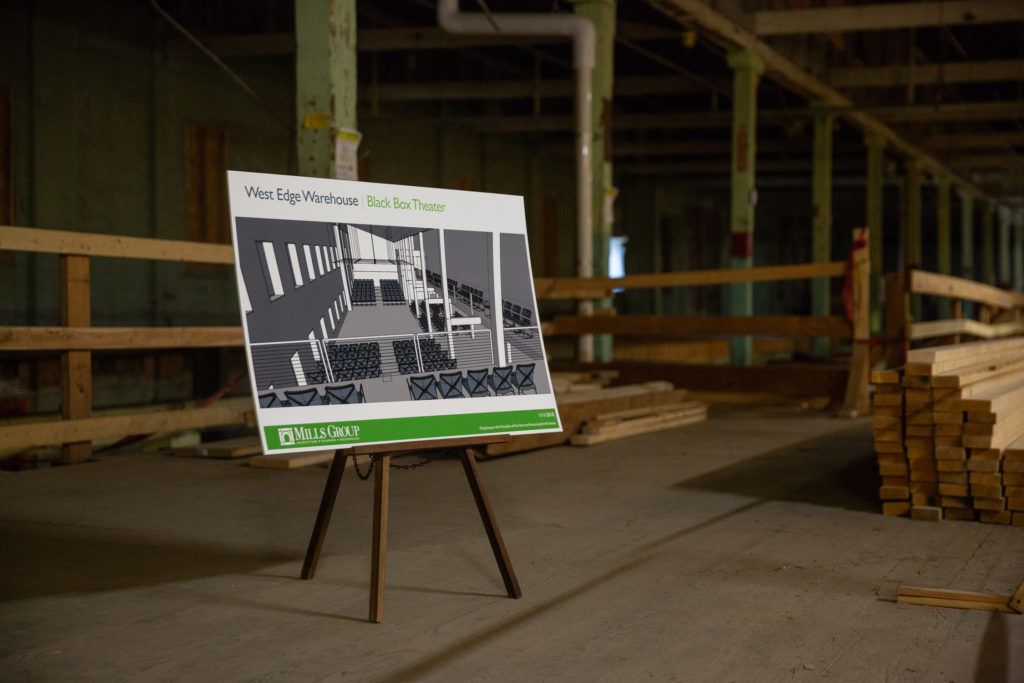
The next Coalfield experiment is creating a Black Box Theater in the 96,000-square-foot, ground floor of the West Edge building. Waving into a gigantic open space, Gina says, "Can't you see it? This will seat about 200 people, give or take. We're hoping to bring in all different sorts…everything from plays to musicians to ordinary speakers, whatever people want." Indeed, this is what the community has asked for and Coalfield is keen to deliver as soon as they raise the remaining $250,000 needed to finish.
As Coalfield continues to innovate and catalyze entrepreneurial ventures, everyone is bought in. Larry Castle, chairman of Coalfield's board of directors, has been supporting the vision since day one. "What we do is we take the people we can work with and give them a different perspective on life. And we may do it one person at a time, but we're not just affecting that one person, we're affecting generations. We're changing a culture, and that's what's amazing."
"I'm not asking the country to feel sorry for us. I'm asking them to do business with us."
Brandon Dennison
"If you look at West Virginia, it's really the land of opportunity. The risks are relatively low, so you can make a run at it," says Sara Payne Scarbro, a community leader and associate vice president for Marshall University Research Corporation. "We're all lifelong learners. That's how it's supposed to be, so you have to try something. If it doesn't work, you tweak it, and you try it again, and it's that resilient spirit that West Virginians have, and I think that you can go from town to town, community to community and see that firsthand."
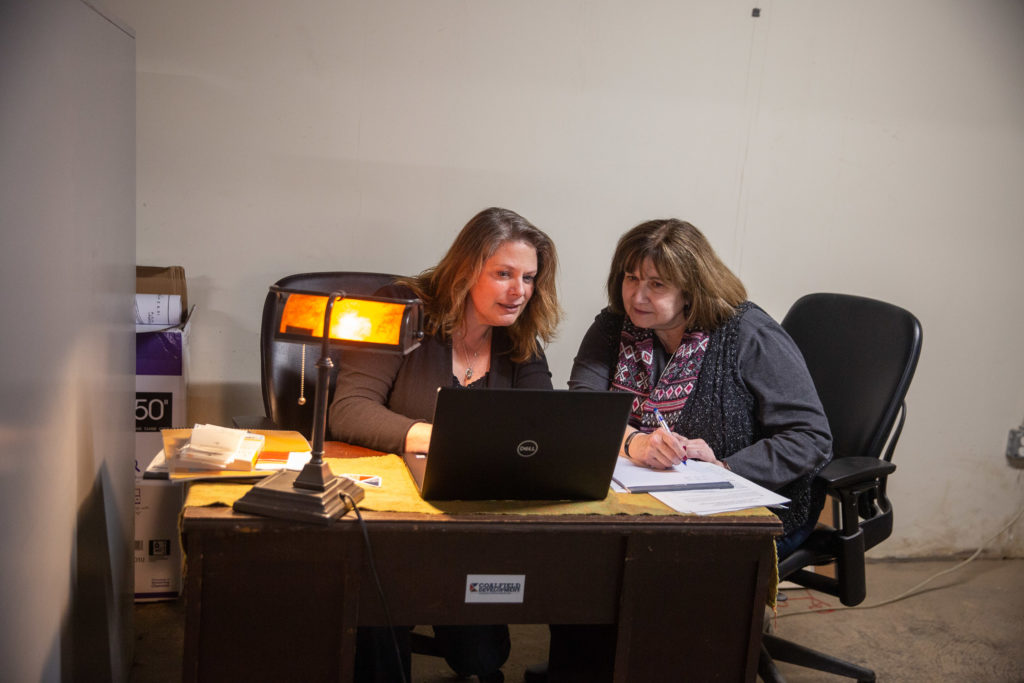
As Coalfield's new ventures flourish, what they need now is access to markets outside West Virginia to expand their vision for a thriving economy. "I hope macro we are pioneering and modeling a newer, better, different way to do business, to do work, to do life, and that that model can spark all kinds of other efforts around the region so that in 100 years, we don't rank 50th in all these statistics," says Brandon.
"What we need now is buyers for our products. Buyers of solar, buyers of t-shirts, buyers of agriculture, buyers of wood products," says Brandon. "We're rolling out a new office suite out of our woodshop, so any business in America can have a conference room table or a bookshelf or a speaking lectern made by a Coalfield Development crew member. I'm not asking the country to feel sorry for us. I'm asking them to do business with us."
Coalfield Development is supported by Stand Together Foundation, which partners with the nation’s most transformative nonprofits to break the cycle of poverty.
Learn more about Stand Together's efforts to make the economy work for all and explore ways you can partner with us.
